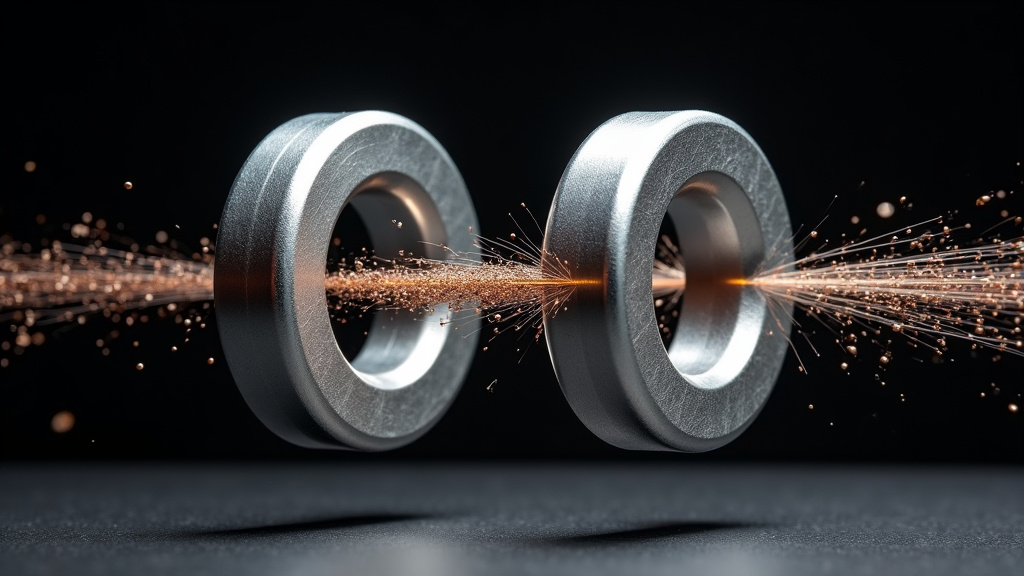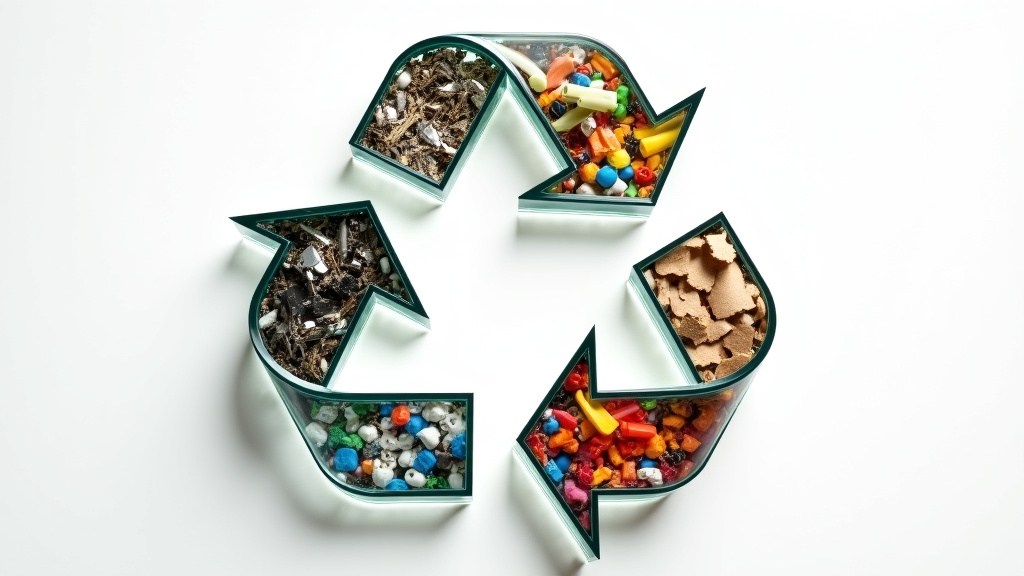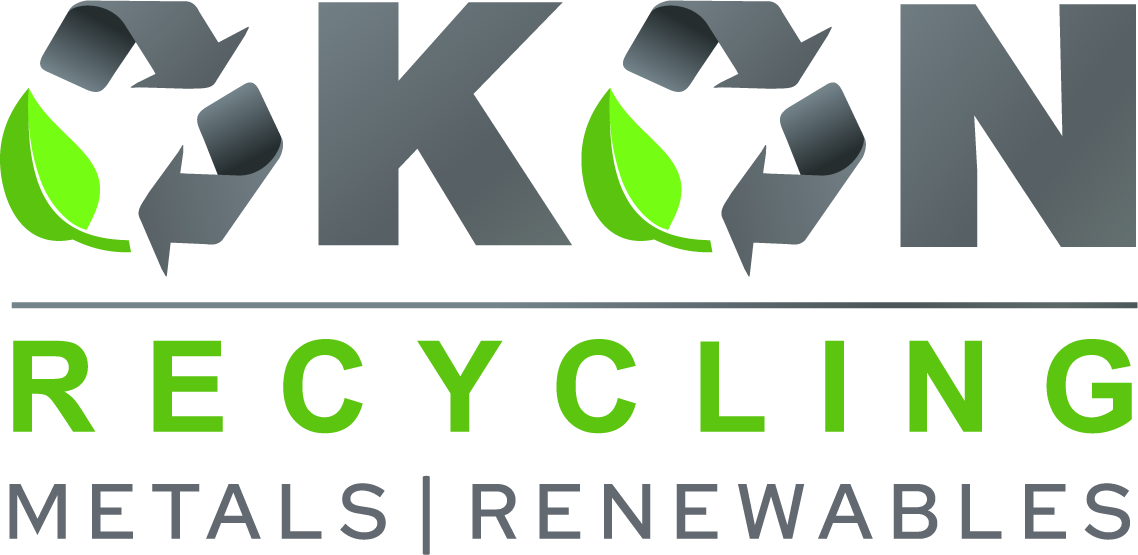5901 Botham Jean Blvd, Dallas, TX 75215
The Importance of Proper Magnet Waste Disposal
February 14, 2025Did you know that over 100,000 tons of rare earth magnets are produced annually, with demand expected to surge tenfold by 2050? Found in everything from smartphones to wind turbines, these powerful magnets are essential to modern technology—but their disposal poses a critical environmental challenge.
Magnets containing rare earth elements like neodymium and dysprosium are valuable but can contaminate soil and water when improperly discarded. Meanwhile, rare earth mining depletes natural resources and generates toxic waste. Recycling is the key to reducing environmental impact and conserving these critical materials.
At Okon Recycling, we’re committed to closing the loop on magnet waste. By recovering rare earth elements, we minimize reliance on destructive mining, lower carbon footprints, and contribute to a more sustainable economy.
Responsible magnet recycling isn’t just waste management—it’s a smarter, greener way forward.
Innovative Techniques in Magnet Recycling

The demand for rare earth elements (REEs) is increasing, leading to the development of innovative recycling techniques to recover these valuable materials from end-of-life magnets. Two prominent methods, hydrometallurgical and pyrometallurgical processes, are at the forefront of sustainable REE recovery, offering promising alternatives to traditional mining practices.
Hydrometallurgical Recycling: A Water-Based Solution
Hydrometallurgical recycling has gained traction due to its efficiency and lower environmental impact. This water-based process involves several steps to extract REEs from waste magnets:
First, the magnets are crushed and ground into a fine powder. This powder is then leached using acids or other solvents to dissolve the REEs. Next, the solution undergoes separation and purification to isolate the individual elements. Finally, the purified REEs are precipitated as salts or oxides.
A success story comes from researchers at Oak Ridge National Laboratory, who developed a highly selective membrane solvent extraction (MSX) technology. This approach has demonstrated over 95% recovery of dysprosium from electric vehicle magnets with 99.9% purity.
Pyrometallurgical Recycling: Harnessing the Power of Heat
Unlike hydrometallurgy, pyrometallurgical recycling uses high temperatures to recover REEs. The process typically involves these stages:
Waste magnets are first demagnetized and then smelted in a furnace at temperatures exceeding 1000°C, causing the magnet components to separate based on melting points. The molten material is carefully cooled and further processed to extract the individual REEs.
While pyrometallurgy can be more energy-intensive, it offers advantages, such as handling mixed and contaminated feedstocks more easily than hydrometallurgical methods. Additionally, high temperatures can effectively destroy hazardous organic compounds present in the waste stream.
Comparing the Benefits
Both hydrometallurgical and pyrometallurgical recycling offer significant advantages over traditional mining:
- Resource Conservation: By recovering REEs from existing magnets, these methods reduce the need for new mining operations, preserving natural resources and ecosystems.
- Reduced Environmental Impact: Recycling generally has a lower carbon footprint and produces less waste compared to primary ore extraction.
- Supply Chain Security: Domestic recycling can help countries reduce their dependence on foreign REE sources, enhancing resource security.
- Economic Benefits: As recycling technologies improve, they become increasingly cost-competitive with primary production methods.
| Method | Process Description | Advantages | Disadvantages |
|---|---|---|---|
| Hydrometallurgical | Uses aqueous solutions to leach metals; involves leaching, purification, and recovery steps. | Lower energy consumption, selective metal recovery, reduced emissions. | Complex process, requires chemical handling. |
| Pyrometallurgical | Involves high-temperature smelting to separate metals; includes roasting, smelting, and refining. | Handles mixed feedstocks, effective at removing contaminants. | High energy consumption, limited metal recovery. |
The Future of Magnet Recycling
As the world transitions towards a more circular economy, the importance of efficient REE recycling cannot be overstated. Researchers and industry leaders continue to refine these processes, striving for even higher recovery rates and lower environmental impacts.
For example, companies like HyProMag are pioneering hydrogen-based recycling methods that promise to be even more energy-efficient than current techniques. These innovations pave the way for a more sustainable future in magnet production and use.
As we continue to rely on REE-based magnets in everything from wind turbines to electric vehicles, embracing these innovative recycling techniques will be crucial for building a more sustainable and resource-efficient world.
The Global Impact of Magnet Waste Recycling

Recycling magnets is becoming a crucial strategy for addressing global resource challenges and advancing technology. As demand for rare earth elements surges, particularly in high-tech and renewable energy sectors, the importance of magnet recycling is significant. This process conserves finite resources and provides substantial environmental and economic benefits worldwide.
One compelling aspect of magnet recycling is its potential for energy savings. A study in the Journal of Cleaner Production found that recycling neodymium-iron-boron (NdFeB) magnets can save up to 95% of the energy compared to primary production methods. This figure highlights the potential for reducing our carbon footprint through efficient recycling practices.
The cost-effectiveness of magnet recycling further amplifies its global impact. Traditional mining and processing of rare earth elements are expensive and environmentally destructive. Recycling offers a more economical alternative. A report by Elsevier Science Direct shows that the magnet-to-magnet recycling process can save around 91% of the energy compared to traditional methods.
Environmental Benefits and Pollution Reduction
Beyond energy and cost savings, magnet recycling plays a crucial role in reducing pollution. Extracting and processing rare earth elements often involve toxic chemicals and generate hazardous waste. By recycling magnets, we can significantly mitigate these environmental risks. For example, recycling five tons of waste magnet material from consumer products can lead to a 45% reduction in energy consumption compared to primary production, as reported by Zakotnik et al.
The global impact of magnet recycling extends to technological advancements. As we move towards a sustainable future, recycled rare earth elements support innovation in fields like electric vehicles and wind turbines. Recycled magnets are becoming integral to developing green technologies, fostering a circular economy in the tech sector.
Comparisons with traditional mining practices highlight the significance of magnet recycling. Conventional mining often results in land degradation and water pollution, while recycling facilities have a smaller environmental footprint. This shift preserves natural habitats and reduces geopolitical tensions associated with rare earth element extraction.
Industry Statistics and Global Impact
To understand the magnitude of magnet recycling’s global impact, consider these industry statistics:
- The global rare earth magnet recycling market is projected to reach $1.7 billion by 2027, growing at a CAGR of 23.5% from 2020 to 2027.
- Recycling one ton of rare earth magnets can save up to 150 tons of ore from being mined.
- The European Union aims to meet 20% of its rare earth element demand through recycling by 2030.
| Year | Projected Market Size (USD Million) | CAGR (%) |
|---|---|---|
| 2023 | 480 | 7.0 |
| 2030 | 1000 | 5.3 |
| 2031 | 882 | 7.0 |
| 2032 | 871.16 | 8.7 |
These figures demonstrate the growing importance of magnet recycling and its potential to reshape global resource management. As more countries and industries recognize the benefits of recycling, we can expect a shift away from traditional, resource-intensive practices.
In conclusion, the global impact of magnet waste recycling is multifaceted and far-reaching. From energy savings and cost-effectiveness to pollution reduction and technological advancement, recycling magnets offers a sustainable solution to pressing environmental and economic challenges. As recycling technologies improve, the positive impact on our planet and economies will grow, paving the way for a more sustainable and resource-efficient future.
Conclusion: Towards a Greener Future
Magnet recycling is more than an environmental necessity—it’s a pathway to a sustainable, resource-efficient future. Companies like Okon Recycling are pioneering advanced recovery methods that conserve rare earth materials, reduce mining impact, and support a thriving circular economy.
By embracing innovative recycling techniques, we can repurpose magnets from MRI machines, wind turbines, and other high-tech applications, minimizing waste and maximizing resource efficiency. This growing industry is not only protecting the environment but also driving job creation and technological advancements.
However, true sustainability requires collective action. Businesses, governments, and individuals must support recycling initiatives by choosing products made with recycled materials and ensuring the responsible disposal of magnet-containing devices.
The future of magnet recycling is bright, but progress depends on engagement. Partner with Okon Recycling to implement smarter, more sustainable waste solutions. Call 214-426-6566 today to learn how you can contribute to a greener, more resource-efficient world.
